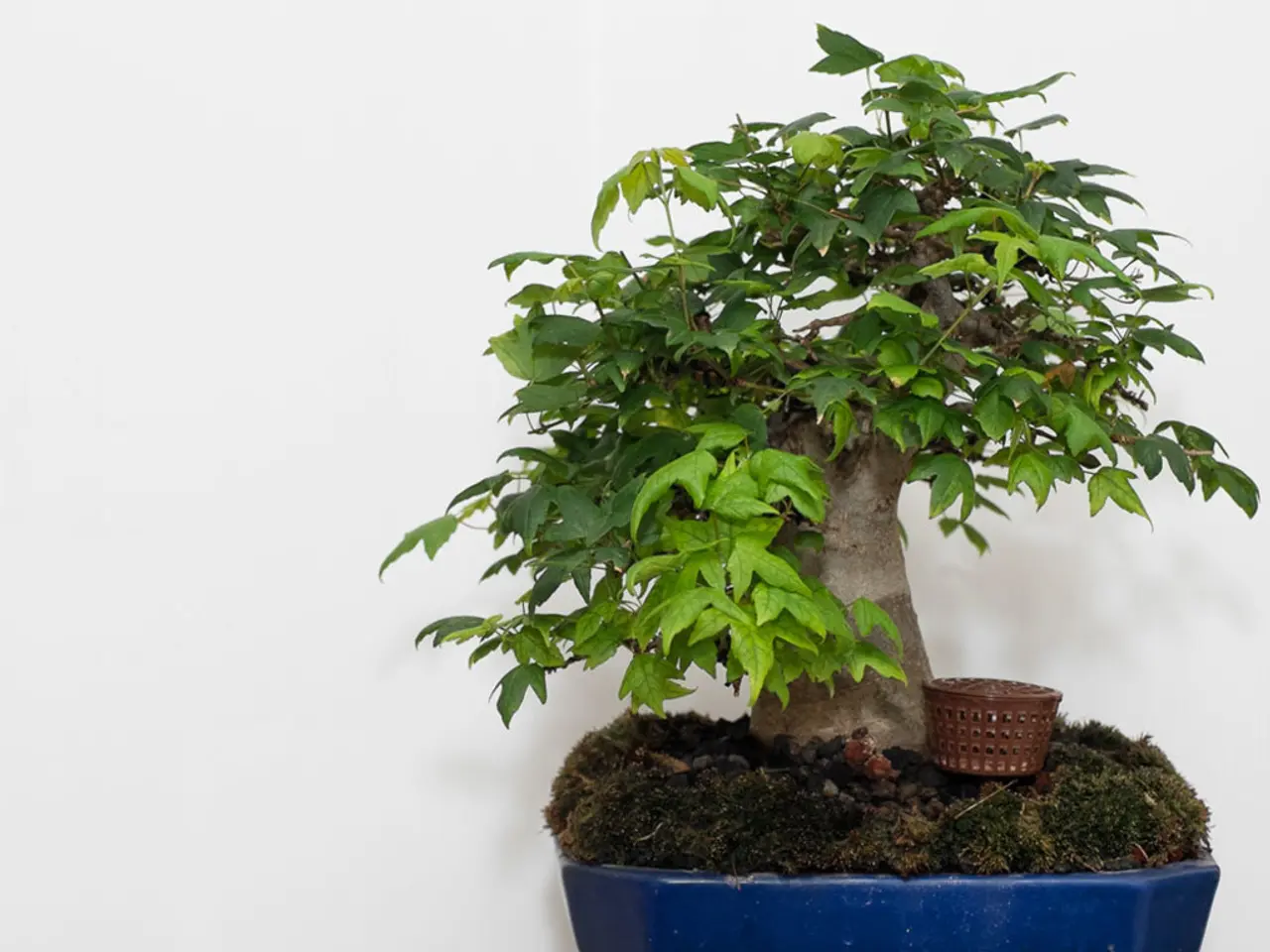Guide to Mugo Pine Bonsai, specifically Pinus Mugus 'Mops' Variety
The Dwarf Mugo Pine, a compact and hardy evergreen, makes an excellent choice for bonsai enthusiasts. With its distinctive pine-typical appearance and compact growth habit, this bonsai tree is relatively easy to care for and can thrive for many years, providing plenty of beauty to enjoy in your home.
Styling and Pruning
When styling a Mugo Pine bonsai, create a pleasing asymmetrical shape with gentle curves. Pruning and backbudding are key to promoting healthy growth while maintaining the tree's compact shape. Prune after the new growth has hardened off, usually in mid to late summer, carefully selecting and pruning buds to enhance branch structure while preserving vigor.
To improve ramification (branch density) and reduce needle size, selectively pluck longer needles after the first flush. This allows light penetration and encourages smaller needles and secondary bud growth. Avoid overplucking, which can weaken the tree.
Branch structure development is another essential aspect. Gradually prune poorly placed or crossing branches, wire, and position new shoots for balanced styling. Training should focus on establishing a triangular silhouette typical of pines, emphasizing taper and layered branching.
General Care
The Dwarf Mugo Pine has a compact growth habit and short needles, making it easier to maintain than other pines. It tolerates winter cold well, is essentially maintenance-friendly, and benefits from good airflow and sunlight.
Watering regularly, especially during periods of hot, dry weather, can prevent browning needles on Mugo pines. To check if a bonsai needs watering, stick your finger into the soil up to the first knuckle. If the soil is dry, it's time to water. During the growing season, from spring through summer, bonsai trees may need to be watered daily or even twice a day if weather is hot and dry. In cooler weather or if the bonsai is in a shady spot, watering every other day or every three days is sufficient.
Using a potting mix specifically formulated for bonsai trees will ensure the right amount of drainage and nutrients for the plant. Fertilizing with a nitrogen-rich fertilizer can correct nutrient deficiency in the soil. Regular fertilizing is beneficial for bonsai trees, but over-fertilizing can result in growth that is too soft and weak.
Repotting and Pests
Repotting should be done every two to three years for young Mugo pines and every three to five years for mature trees, in late winter or early spring before new growth begins. Choose a pot that is only slightly larger than the current pot to make it easier for the roots to establish themselves and avoid problems with over watering.
If there are signs of pests or disease, contact a professional for treatment options. The Mugo Pine can turn brown due to drought stress, nutrient deficiency, or pests/diseases.
Growing from Seed
To grow a Mugo Pine bonsai from seed, soak the seed in water for 24 hours and plant in a well-draining seed starting mix.
The Bonsai World Platform
The Bonsai World platform aims to equip individuals with everything they need to grow and maintain a beautiful bonsai tree. Whether you're a seasoned bonsai enthusiast or just starting out, Bonsai World offers a wealth of resources to help you succeed in your bonsai journey.
Training a Mugo Pine bonsai involves using plant ties or bonsai training wire. Using a bonsai plant food specially formulated for bonsai trees ensures the plant gets all the nutrients it needs in smaller, more frequent quantities.
In summary, train and prune your Dwarf Mugo Pine after the growth flush hardens, use careful needle plucking to enhance density and health, and wire branches thoughtfully to develop a classic pine bonsai shape while maintaining the tree’s vigor. With the right care and attention, your Mugo Pine bonsai will thrive and bring you years of enjoyment.
- In addition to bonsai care and training, consider a career in education-and-self-development, where you can learn various skills and subjects, fostering personal growth.
- When not nurturing your bonsai, indulge in shopping for fashion-and-beauty products and home-and-garden decor, upgrading your lifestyle choices.
- After a long day of tending to your bonsai, consider taking time out for travel and sightseeing, broadening your horizons and enriching your experiences.
- For pet lovers, spending quality time with furry companions can offer emotional support and companionship, making for a happier and healthier life.
- While enjoying a delicious meal in your sunlit dining room, don't forget the importance of maintaining a balanced diet and regular exercise for a healthy food-and-drink life, contributing to a sustained sports performance.




